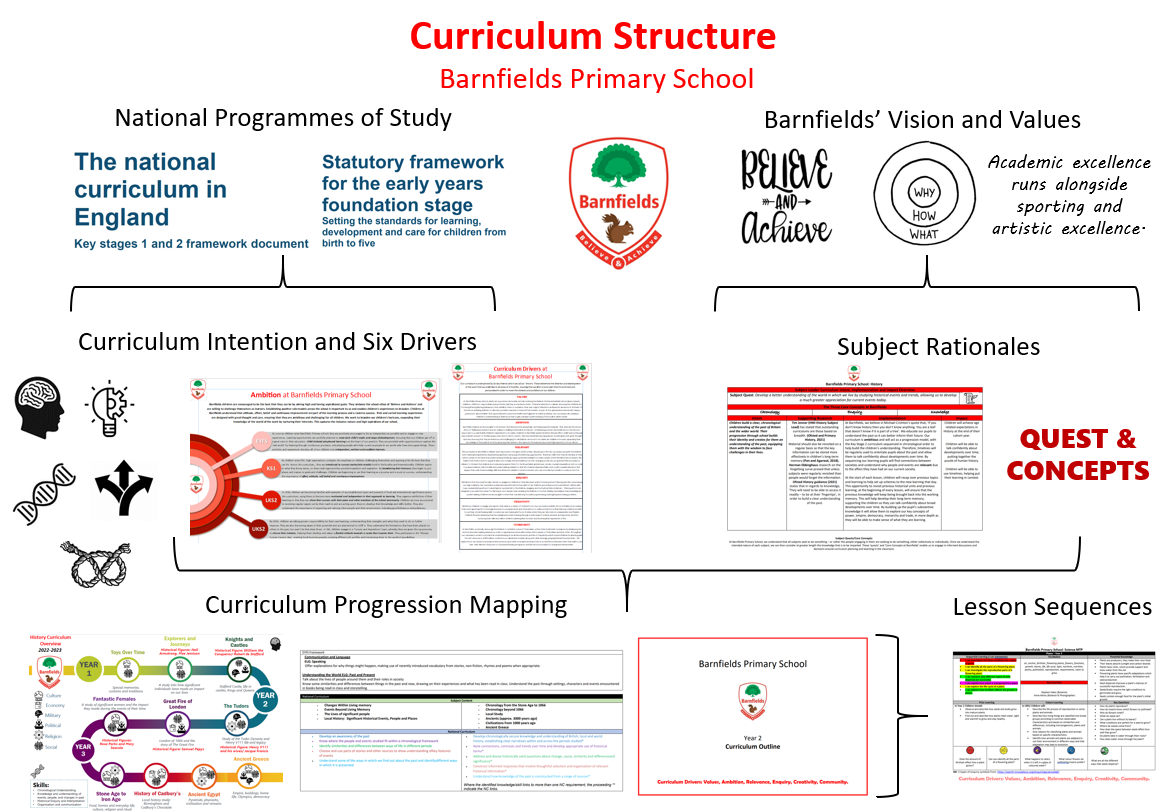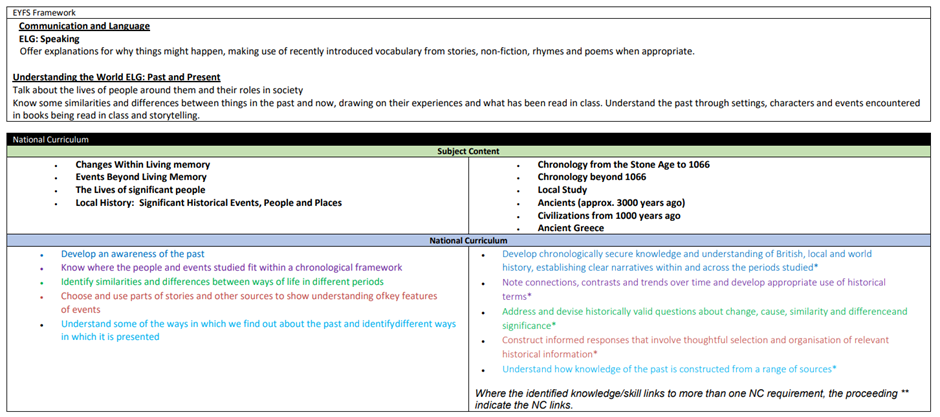Curriculum STRUCTURE
Curriculum Structure at Barnfields
|
At Barnfields, the broad and balanced curriculum is coherently and progressively planned and sequenced towards cumulatively sufficient knowledge and skills for future learning and employment. Curriculum Outlines have been produced for each year group, providing an overview of the content that is being taught in each unit, in each subject, from Yr1-6. These ensure full compliance with the KS1 and KS2 National Curriculum. Staff at Barnfields are passionate about ensuring that the planning and teaching of each subject remains ‘true to discipline’. Knowledge and skills (knowledge-engaged) are two core components of the design, enabling learners to build upon what they have learnt.
In English, teachers foster a love of reading and language by immersing learners in high-quality texts, providing them with the confidence to explore their imagination through our literature-led curriculum. With modelling at the heart of them, the Writing Rainbow is used as a tool to structure a series of progressive writing lessons that include a number of teaching strategies, such as sentence stacking and paragraph piling. ‘Deepen the moment’ tasks feature within the curriculum, whereby learners enrich a given plot point/writing focus independently by showcasing one of the writing lenses. At the end of each unit, learners apply their learning to an independent piece of writing where they plan, write and then edit their work. The editing process allows children to reflect on their writing and consider how they can improve it. In Mathematics, we use the White Rose Scheme of Learning to future guide and support teaching practice and pedagogy from Reception to Year 6, which carefully sequences concepts and procedures to build mathematical knowledge and skills systematically over time. There is a distinct focus on number work. Children who have an excellent grasp of number make better mathematicians. Spending longer on mastering key concepts will build a child’s confidence and help secure understanding. The scheme breaks the curriculum down into small, manageable steps that all children work on in a daily lesson together. Those that need a bit more support are provided with extra scaffolding through the use of modelling, resources and adult support. Those that require more challenge are given complex tasks and deeper problems to build a more profound understanding. The scheme interleaves prior content with new concepts. This helps children make links between topics and understand them more deeply. Across the foundation subjects, Road Maps outline the units taught within each subject, demonstrating a balance of each aspect studied (e.g. mechanisms, food and nutrition, textiles in Design Technology). Knowledge-engaged progression grids (unique to Barnfields) are in place to support the planning process. These documents outline the powerful knowledge that must be taught in each unit, ensuring that lessons are coherently built across the school and vertical links made to support remembering.
In Science, History, Geography, Design Technology and Art, this is further supplemented through the medium-term planning documents, which outline: key vocabulary, scientists/significant individuals/artists studied, lesson sequences, prior and future knowledge. These documents work in tandem with each other, enabling the staff to plan progressive and well-considered lesson that thoughtfully incorporate retrieval practice. |


